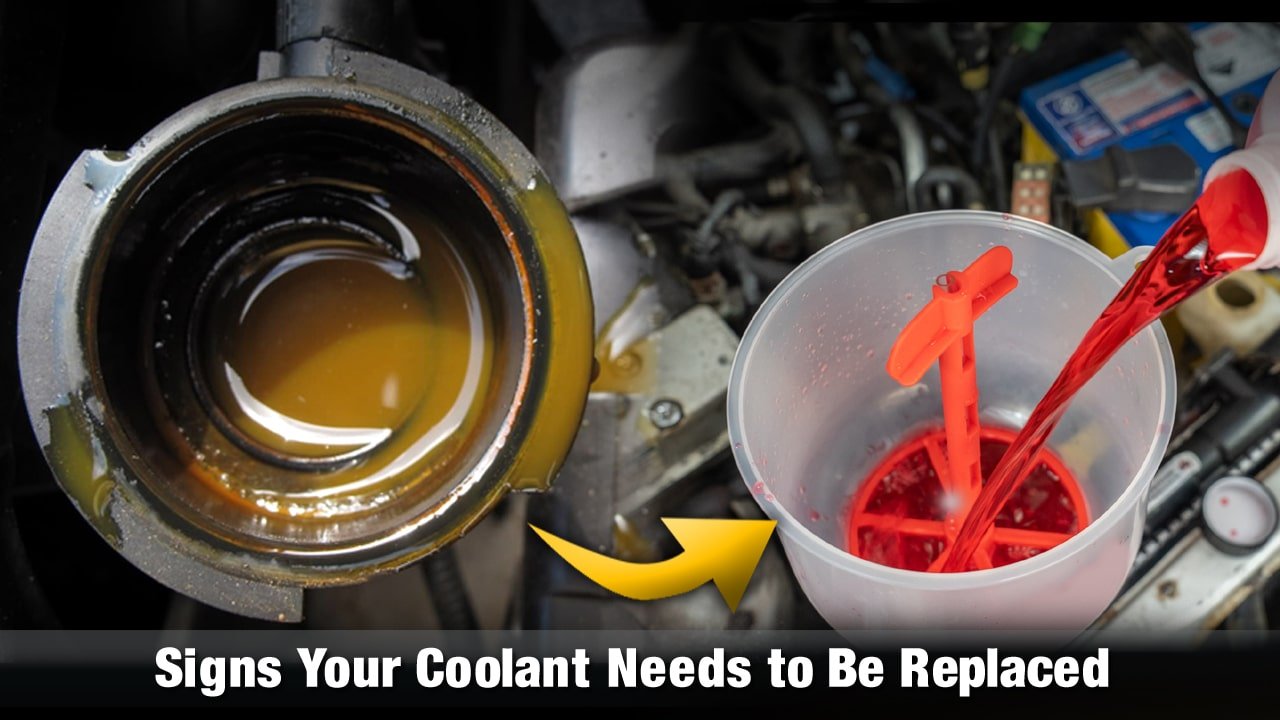
Is your engine overheating, making unusual noises, or emitting a sweet smell? These could be signs your coolant needs to be replaced. While it’s easy to overlook coolant maintenance, ignoring it can lead to major engine trouble. From leaks and low fluid levels to rusty or discolored coolant, there are several warning signs that every driver should be aware of.
This guide breaks down the most common warning signs, explains how temperature affects coolant performance, and offers simple tips to keep your cooling system in top shape. Whether you’re prepping for summer heat or winter freezes, staying ahead of coolant issues is key to protecting your engine—and your wallet.
Coolant Flush: Signs to Watch For and Easy Maintenance Tips
Sometimes, it’s easy to tell when your car needs a coolant flush, such as when the engine starts overheating or the temperature gauge rises. However, there are also less obvious signs that you should be aware of.
Weird Noises from the Engine
If your engine starts making strange sounds or doesn’t feel right, it’s a good idea to have it checked. Don’t wait! A mechanic can identify the problem before it worsens.
Leaking Coolant
Notice blue or orange fluid under your car? That’s likely coolant leaking. If your engine doesn’t have enough coolant, it can overheat very fast. That isn’t good for your vehicle!
Summer Check-Up
Hot weather can exacerbate coolant problems. Before summer arrives, ensure your car has fresh coolant, clean oil, and undergoes any necessary maintenance. This helps prevent overheating.
Follow Your Manual
Every car is different. Your vehicle’s manual tells you when to change the coolant. Factors such as the age of your vehicle, your driving habits, and the weather where you live can all impact your coolant schedule.
Still Not Sure? Ask a Pro
If you’re not sure whether your car needs a coolant flush, don’t guess. Please take it to a mechanic. They’ll inspect it and help you resolve the issue quickly and efficiently, without incurring high costs.
What is Engine Coolant?
Engine coolant is a specialized liquid that helps maintain your car’s engine at the optimal temperature. It’s made from water and a chemical called antifreeze (usually ethylene glycol or propylene glycol). This mix keeps the engine from getting too hot or too cold.
Coolant works by carrying away heat from the engine, preventing it from overheating. The antifreeze in it also prevents the liquid from freezing in winter or boiling in summer.
But that’s not all! Coolant also has extra ingredients that help protect your engine. These ingredients:
- Stop rust and corrosion.
- Keep the water pump running smoothly.
- Protect rubber parts, such as hoses, from drying or cracking.
Coolant is designed to last a long time, but it still needs to be checked and replaced when it becomes old or contaminated. If you don’t take care of your coolant, your engine could overheat, freeze, or get damaged. Therefore, it’s essential to stay on top of coolant maintenance.
How Temperature Affects Coolant Performance
Coolant helps keep your engine at the right temperature, but extreme hot and cold weather can affect its performance.
In Hot Weather:
When it’s hot outside, your engine gets even hotter than usual. This makes it more difficult for the coolant to absorb and carry away heat. If the coolant can’t do its job, the engine may overheat. Overheating can damage engine parts or even cause the engine to stop working.
In Cold Weather:
When it’s freezing outside, coolant needs to stop itself from turning into ice. That’s where antifreeze comes in. If there’s not enough antifreeze, the coolant can freeze inside the engine. This can crack engine parts and cause severe damage.
Why the Right Coolant Matters:
Modern coolants are designed to operate effectively in both hot and cold weather conditions. However, it’s still essential to use the correct type for your car and climate. Some coolants are better for cold areas, while others work best in the heat.
Coolant Maintenance Tips:
To keep your coolant working properly:
- Check the coolant level regularly.
- Look for leaks.
- Make sure the coolant mixture is correct (usually a mix of water and antifreeze).
- Get a coolant flush when needed to remove dirt and old fluid.
Taking care of your coolant helps your engine run smoothly in all weather conditions.
When to Check the Engine Coolant
Engine coolant should be checked at least once a month or every 3,000 miles—whichever comes first. It’s also essential to check coolant levels before long trips and during very hot or cold weather.
Safety Tip: Always check the coolant when the engine is cool. Opening the coolant cap while the engine is hot can cause burns from steam or hot fluid.
Inspect the coolant reservoir located under the hood. Make sure the level is between the “MIN” and “MAX” lines. Regular checks help identify leaks early and prevent engine problems, such as overheating or freezing.
How to Check the Coolant
Follow these easy steps:
- Wait for the engine to cool down – Never open the cap when the engine is hot.
- Locate the coolant reservoir – It’s typically a transparent plastic tank located near the radiator.
- Check the level – The fluid should be between the minimum and maximum marks.
- Check the color – Coolant should look bright (green, orange, or yellow). If it’s rusty, cloudy, or has particles, it should be replaced.
- Top it off if needed – Add the correct type of coolant and mix with water if necessary. Always follow the label instructions.
Monitoring coolant levels helps protect the engine and ensures the vehicle runs smoothly in all weather conditions.
Signs That Coolant Needs to Be Replaced
Are you unsure if it’s time to replace your coolant? Here are some clear signs to watch for:
- Engine overheating – If the temperature gauge goes up often or the engine gets too hot, the coolant may not be working correctly. Failing to address this issue can result in severe engine damage.
- Sweet smell – A strong, sweet smell in the cabin may indicate that the heater core is leaking. This can reduce heat in winter and lead to coolant loss.
- Dirty or rusty coolant – Coolant should be bright in color. If it appears brown or contains particles floating in it, it’s no longer effective.
- Coolant runs low often – Needing to add coolant frequently could mean there’s a leak or a problem in the system.
- Coolant Looks Dirty or Rusty – The coolant should be bright and clean, typically appearing as green, orange, pink, or blue. If it looks brown, cloudy, or has particles floating in it, it’s time for a change.
- Coolant Leaks – Spots of green, pink, or orange fluid under the car could mean a coolant leak. Low coolant levels can quickly lead to overheating.
- Warning Lights on the Dashboard – If a temperature light or low coolant warning appears, don’t ignore it. These alerts indicate that the system requires attention.
If any of these signs are noticed, it’s essential to act fast to avoid damage to the engine.
How Often to Change Coolant
How often to change the coolant depends on the car and the type of coolant used:
- Traditional green coolant – Usually needs to be replaced every 30,000 miles or 2 years.
- Extended-life coolant (orange or red) – Can last up to 100,000 miles or 5 years.
Always refer to the vehicle owner’s manual for the correct schedule. Some newer cars may use special types of coolant that have different requirements. Regular checks ensure the cooling system operates at its best.
Prevent Costly Repairs With Regular Coolant Changes
Skipping a coolant change might not seem serious, but it can lead to significant, expensive problems down the road. Here’s why keeping up with coolant maintenance is so important:
- Stops Rust and Damage Inside the Engine: Old coolant can’t fight rust as effectively as it should. This can lead to corrosion inside the engine and radiator, causing clogs and costly repairs.
- Helps Prevent Blown Head Gaskets: A damaged head gasket can be expensive to repair. One of the leading causes? Bad or low coolant.
- Keeps the Radiator and Water Pump Working: Coolant helps keep the water pump running smoothly. When the coolant breaks down, it stops protecting these parts, and they can wear out much faster.
Tips for Taking Care of the Cooling System
Keeping the cooling system in good shape helps the engine run smoothly. Here are some helpful tips:
- Use the correct type of coolant recommended for the vehicle.
- Check the coolant level and color regularly.
- Inspect hoses for leaks, cracks, or wear, and replace them as needed.
- Ensure the radiator is clean and free from leaves, dirt, and bugs.
- Have a coolant flush performed by a professional periodically to remove old fluid and dirt.
With regular care, the engine will stay cool, last longer, and perform better in all seasons.
Final Takeaways
If the engine is making strange sounds, overheating, or if coolant levels keep dropping, don’t wait. These signs often indicate a deeper problem that can escalate into major engine trouble. A coolant flush isn’t just routine care—it’s an important step to keep the engine healthy and prevent severe damage.
Think of it as giving your car a fresh start. Acting early means smoother drives, better performance, and peace of mind. Don’t ignore the warning signs—take care of your cooling system and let your engine stay cool with help from Fubex Lubricants.
FAQs
Q1: What happens if the coolant is never changed?
Old coolant can’t protect the engine as well as it should. It may lead to overheating, rust, and costly engine damage over time.
Q2: Can topping off coolant replace a complete change?
Topping off might help for now, but it doesn’t remove old, dirty coolant. A full coolant change is the most effective way to keep the system clean and functioning correctly.
Q3: How to know which coolant is right for the car?
Refer to the owner’s manual or consult a mechanic. Using the wrong coolant can harm the cooling system.
Q4: Is it safe to mix different types of coolant?
No. Mixing coolants can cause a chemical reaction that clogs parts and makes the coolant less effective.

Editor-at-Large
A passionate writer in the lubricant industry, Awais Iqbal has been covering oils, greases, and industrial fluids since the start of his career. At 25, he’s already written for blogs, catalogs, and brand guides across the UAE. Awais’s insights help companies connect with their audience, and his clear, helpful writing style is trusted by brands in the region.


